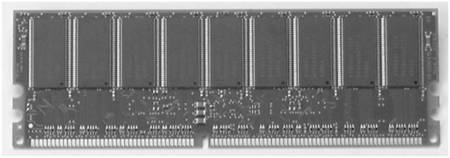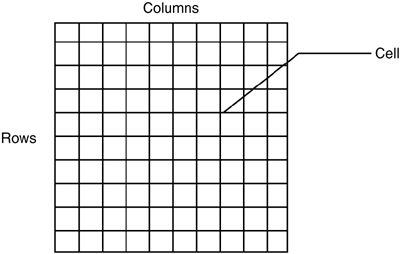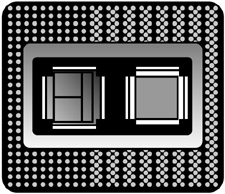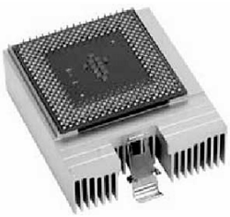Figure 1
shows the main components of a basic computer system. Notice how the
key components are connected by the address bus, control bus, and the
data bus. Together these three components make up the “system bus.”

Server performance is substantially increased if
the system buses are utilized on every clock cycle. As technical
innovations have consistently increased processor speed and capacity,
systems designers have been challenged to find ways to keep the system
buses fully utilized at every clock cycle.
1. DRAM
It became apparent early in the evolution of
computers that magnetic storage technologies such as tapes and hard disk
drives would not be able to keep up with the processor demands because
of their slow speed. Memory modules were the innovation that met the
challenge to keep up with the increasing speed of processors. Figure 2 shows a typical memory module.

Memory modules use dynamic
RAM (DRAM) technology to store and read data for the processor.
A DRAM module stores bits of data in capacitors.
(A capacitor is an electronic device that can hold an electrical
charge.) A capacitor that is holding a charge is equivalent to a binary
1. A capacitor without a charge is equivalent to a binary 0.
DRAM is called dynamic RAM because capacitors
cannot hold a charge indefinitely. A significant limitation of a DRAM
module is that the charge in a capacitor completely drains in a matter
of milliseconds if left alone. To keep the data intact, the capacitors
must be recharged thousands of times per second. During the recharge
process, the memory chip cannot be used to send data to or receive data
from the processor.
The capacitors on a DRAM module are arranged in grids, sometimes called a memory matrix or a memory chip, as illustrated in Figure 3.
The rows and columns of the grid are electrically conductive traces
etched on the chip. The intersection of a row and column is called a cell. Each cell, which is identified by its row and column address, contains a transistor and a capacitor.

2. SRAM
To overcome the limitations of DRAM, engineers
developed cache. Cache uses a group of transistors arranged as a
flip-flop circuit, or latch, to store data. A latch is an electronic
circuit that alternates between two states. When current is applied, the
latch changes to its opposite state. Figure 4 shows a Pentium Pro Processor with a 512KB cache.

Cache is known as static
RAM (SRAM) because, unlike capacitors, latches do not have to be refreshed. This makes cache much faster than memory.
Through the years, engineers have added layers
of cache between the processor and memory. Methods have been developed
to move cache from the system board to the actual processor. Some Xeon
processors, for example, have three levels of cache on the processor.
2.1. LIMITATIONS OF SRAM
Despite its speed, cache does have limitations.
First, it is more expensive than DRAM. DRAM stores a bit in a single
capacitor, but an SRAM latch requires six to eight transistors to store
the same bit. The more transistors, the more expensive the chip is to
produce.
And second, the transistors in the latches make
cache very hot. Special cooling mechanisms, such as heat sinks, must be
developed to channel the heat away from the processor. This also
increases the cost of SRAM. Figure 5 shows an FC-PGA processor on a silver heat sink.
